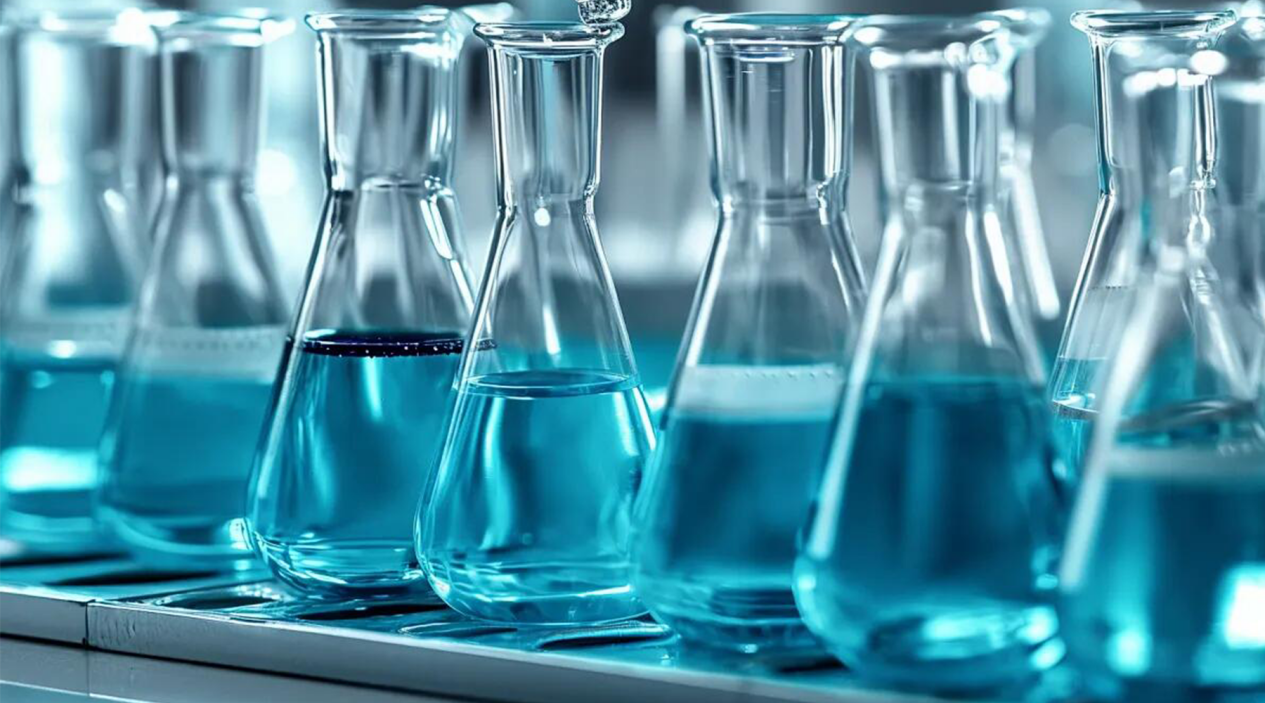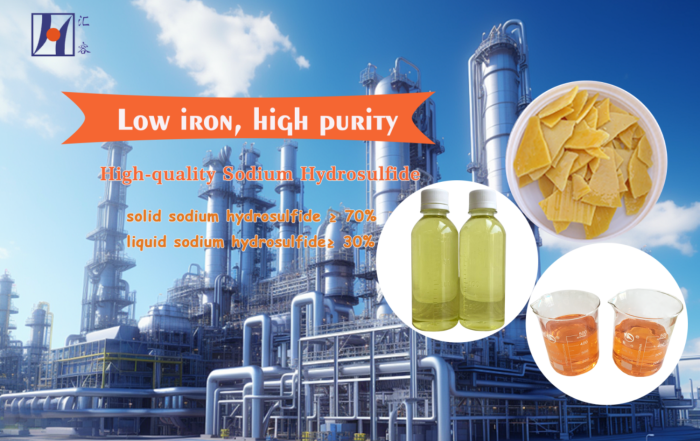Introduction To Industrial Sodium Hydrosulfide
Industrial sodium hydrosulfide is generally orange or yellow and bitter. It is easy to deliquesce. It decomposes and releases hydrogen sulfide at the melting point. It is easily soluble in water and alcohol. It is used in the dye industry to synthesize organic intermediates and auxiliaries for preparing sulphur dyes, in the leather industry for dehairing and tanning of raw hides, in the fertilizer industry for removing monomer sulfur in activated carbon desulfurizers, in the mining industry for copper ore dressing, in the production of artificial fibers for sulfite dyeing, etc. It is a raw material for manufacturing ammonium sulfide and pesticide ethyl mercaptan semi-finished products, and is also used for wastewater treatment, etc.
The industrial production of sodium hydrosulfide generally uses the absorption method: absorbing hydrogen sulfide gas with alkali sulfide solution (or caustic soda solution). Because hydrogen sulfide gas is toxic, the absorption reaction should be carried out under negative pressure. In order to prevent the exhaust gas from polluting the air with too much hydrogen sulfide gas, several absorbers are operated in series during production, and the hydrogen sulfide content is reduced to a lower level after multiple absorptions. The absorption liquid is concentrated to obtain sodium hydrosulfide.
Next, let’s talk about the inspection indicators and detection methods of sodium hydrosulfide in detail.
1. What Are The Detection Indicators Of Sodium Hydrosulfide?
① Appearance of sodium hydrosulfide: The appearance of sodium hydrosulfide is yellow, green-yellow or orange-red liquid.
② Content of sodium hydrosulfide: The content of sodium hydrosulfide is one of its main quality indicators and needs to be determined by a specific chemical analysis method.
③ Content of sodium sulfide: The content of sodium sulfide is also an important indicator for the quality control of sodium hydrosulfide and needs to be controlled within a certain standard range.
④ Content of sodium carbonate: The indicator of sodium carbonate was added in the revision work in 2019.
⑤ Content of sodium thiosulfate: The indicator of sodium thiosulfate was also added in the revision work in 2019.
⑥ Content of sodium sulfite: The revision work in 2019 also includes the indicator of sodium sulfite.
⑦ Iron content: Iron content is also an indicator for sodium hydrosulfide detection, which needs to be determined by a specific chemical analysis method.
⑧Total organic carbon content: In the revision of GB/T 23937-2020 standard, it is proposed to increase the index value of total organic carbon content.
These indicators cover the main quality control aspects of sodium hydrosulfide products and ensure their performance and safety in industrial applications. Through these detection indicators, the quality of sodium hydrosulfide products can be effectively evaluated and controlled.
2. What Are The Chemical Analysis Methods For Sodium Hydrosulfide Detection?
Acid-base This is a commonly used method to measure the concentration of sodium hydrosulfide liquid, based on the neutralization reaction of sodium hydrosulfide with acid to produce hydrogen sulfide gas. The concentration of sodium hydrosulfide can be calculated by adding an acid solution of known concentration to the sodium hydrosulfide solution and using an indicator to determine the neutralization point of the acid-base solution.
02 Ion Chromatography
Ion chromatography is an efficient and sensitive measurement method. It uses an ion exchange column to separate the ions in sodium hydrosulfide and monitors the concentration of the ions in real time through a detector. This method has the characteristics of high resolution and wide linear range, and is suitable for measuring sodium hydrosulfide solutions in different concentration ranges.
03 Methylene Blue Spectrophotometry
Used for the determination of hydrogen sulfide, the principle is that hydrogen sulfide is absorbed by cadmium hydroxide-polyvinyl alcohol ammonium phosphate solution to form a colloidal precipitate of cadmium sulfide. In sulfuric acid solution, sulfide ions react with p-aminodimethylbenzene solution and ferric chloride solution to form methylene blue, which is determined by spectrophotometry according to the color depth.
04 PH Titration Method:
Use pH electrode or Alizarin Yellow GG-thymol blue mixed indicator solution to indicate the first end point and calculate the sodium sulfide content; add formaldehyde to react with sodium hydrosulfide to generate sodium hydroxide, use pH electrode or phenolphthalein to indicate the second end point and calculate the sodium hydrosulfide content; continue titration and use pH electrode or bromocresol green-methyl red indicator solution to indicate the third end point. Take another sample without adding barium chloride to make it constant, titrate upward, record the volume consumed between the second and third end points, deduct the volume consumed at the third end point of the first titration, and calculate the sodium carbonate content.
05 Phenanthroline Colorimetric Method:
This is a commonly used method for determining iron content. Under certain acidity conditions, the ferrous ions (Fe2+) in the test solution react with 1,10-phenanthroline to form a red complex. By measuring its absorbance at a wavelength of 506nm, the iron content can be calculated.
06 Vacuum Evaporation Method:
Dissolve the sample to be tested in water and add an appropriate amount of acid, such as hydrochloric acid or sulfuric acid, to completely decompose it. Then pour the solution into an evaporating dish and evaporate it under vacuum. During the evaporation process, sodium hydrosulfide will generate hydrogen sulfide gas, which can be quantitatively analyzed by gas detection equipment (such as gas chromatography).
07 Electrochemical Method
The conductivity of sodium hydrosulfide solution can be used to detect it by a conductivity meter or an electrochemical analyzer. Dissolve the sample to be tested in an appropriate amount of solvent, and measure its conductivity by a conductivity meter to indirectly determine the content of sodium hydrosulfide.




